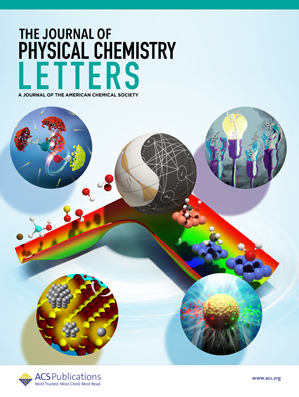Circularly Polarized Light-Induced Microwave Conductivity Measurement: Rapid Screening Technique of Electronic Conductivity in Chiral Molecular Materials
IF 4.8
2区 化学
Q2 CHEMISTRY, PHYSICAL
引用次数: 0
Abstract
We developed circularly polarized light–time-resolved microwave conductivity (CPL–TRMC) for investigation of the CPL-dependent photoinduced charge carrier dynamics in chiral materials with chiroptical properties. Chiral R- or S-perylenediimide (PDI) molecular thin films were paired with handedness-sorted (6,5) and (11,–5) single-walled carbon nanotube (SWCNT) films to compose a donor (D)–acceptor (A) system for the spin-dependent charge separation process, and the D–A system was examined through linear and circular polarization-dependent steady-state and time-resolved measurements. The R-PDI-(6,5) film exhibited strong enhancement in circular dichroism (CD) and revealed a reversed transient conductivity signal, relative to the polarity of CD in CPL–TRMC measurement upon excitation of the E11 state, which is interpreted as arising from a spin-dependent initial charge separation process. Through linear polarization-dependent flash photolysis TRMC and circular polarization-resolved femtosecond transient absorption, we could deduce that sub-picosecond intertubular charge separation upon E11 excitation in SWCNT was responsible for the spin-dependent photoconductivity transients observed in CPL–TRMC measurements.

圆偏振光诱导微波电导率测量:手性分子材料电子电导率的快速筛选技术
我们开发了圆偏振光时间分辨微波电导率(CPL-TRMC),用于研究具有chiroptic性质的手性材料中cpl依赖的光诱导载流子动力学。将手性R-或s-苝二酰亚胺(PDI)分子薄膜与手性(6,5)和(11,- 5)单壁碳纳米管(SWCNT)薄膜配对,组成了自旋依赖电荷分离过程的供体(D) -受体(a)体系,并通过线性和圆偏振依赖稳态和时间分辨测量对D - a体系进行了检测。在E11态激发下,R-PDI-(6,5)薄膜表现出圆二色性(CD)的强增强,并显示出与CPL-TRMC测量中CD极性相反的瞬态电导率信号,这被解释为由自旋依赖的初始电荷分离过程引起。通过线性偏振相关的闪光光解TRMC和圆偏振分辨的飞秒瞬态吸收,我们可以推断出,在E11激发下,swcnts中亚皮秒的管间电荷分离是在cpll - TRMC测量中观察到的自旋相关光导瞬态的原因。
本文章由计算机程序翻译,如有差异,请以英文原文为准。
求助全文
约1分钟内获得全文
求助全文
来源期刊

The Journal of Physical Chemistry Letters
CHEMISTRY, PHYSICAL-NANOSCIENCE & NANOTECHNOLOGY
CiteScore
9.60
自引率
7.00%
发文量
1519
审稿时长
1.6 months
期刊介绍:
The Journal of Physical Chemistry (JPC) Letters is devoted to reporting new and original experimental and theoretical basic research of interest to physical chemists, biophysical chemists, chemical physicists, physicists, material scientists, and engineers. An important criterion for acceptance is that the paper reports a significant scientific advance and/or physical insight such that rapid publication is essential. Two issues of JPC Letters are published each month.
 求助内容:
求助内容: 应助结果提醒方式:
应助结果提醒方式:


